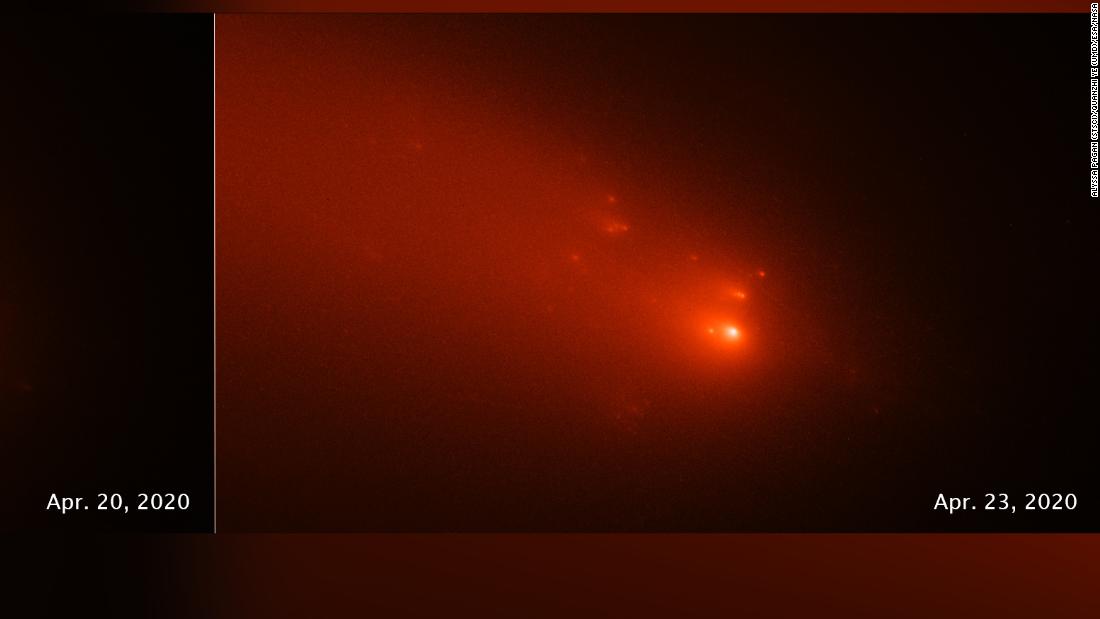
Now, observations made while the comet, called ATLAS, was still intact, have shed light on the comet’s “family,” which dates back thousands of years.
Comet ATLAS was first detected by the latest terrestrial asteroid impact alert system, or ATLAS, operated by the University of Hawaii on December 28, 2019.
There are no records of this observation, but studying comets in the way Ye and his team analyzed comet ATLAS helps them trace the origins of comets. In fact, the ATLAS orbit around the sun followed a trail similar to that of a comet observed in 1844, suggesting that both comets were “brothers” that came from a parent comet that it was broken centuries before.
It is not uncommon for a comet to break into a “family.” Multiple telescopes, including Hubble and even the Galileo spacecraft, focused on Jupiter in July 1994, when comet Shoemaker-Levy 9 was shredded by the gravitational pull of the gas giant. It formed a “comet train” made up of pieces of the comet that formed a line.
Astronomers had predicted the comet’s disappearance. They watched as pieces of it fell on Jupiter, creating a spectacular fireball and leaving scars on the massive planet that were visible for months afterwards.
Comet ATLAS is different in that it disintegrated when it was farther from the sun than Earth, unlike its parent comet, which was closer to the sun when it broke.
“If it separated so far from the Sun, how did it survive the last step around the Sun 5,000 years ago? That’s the big question,” Ye said in a statement. “It’s very unusual because we wouldn’t expect it. It’s the first time a family member of a long-lived comet is seen breaking before it passes closer to the Sun.”
When astronomers see how a comet splits into pieces, they can also determine how it came together in the first place. Comets are gigantic dirty snowballs made of dust and ice that come from the edge of the solar system.
Part of the ATLAS comet broke in a few days, while another fragment survived for weeks.
“This tells us that one part of the core was stronger than the other part,” Ye said.
It is possible that the comet was torn by the material it was expelling, or that it had been destroyed like fireworks.
“It’s complicated because we’re starting to see these hierarchies and the evolution of comet fragmentation. The behavior of comet ATLAS is interesting but difficult to explain,” Ye said.
Meanwhile, the brother of comet ATLAS, observed in 1844, will no longer be visible in our sky until the 50th century.